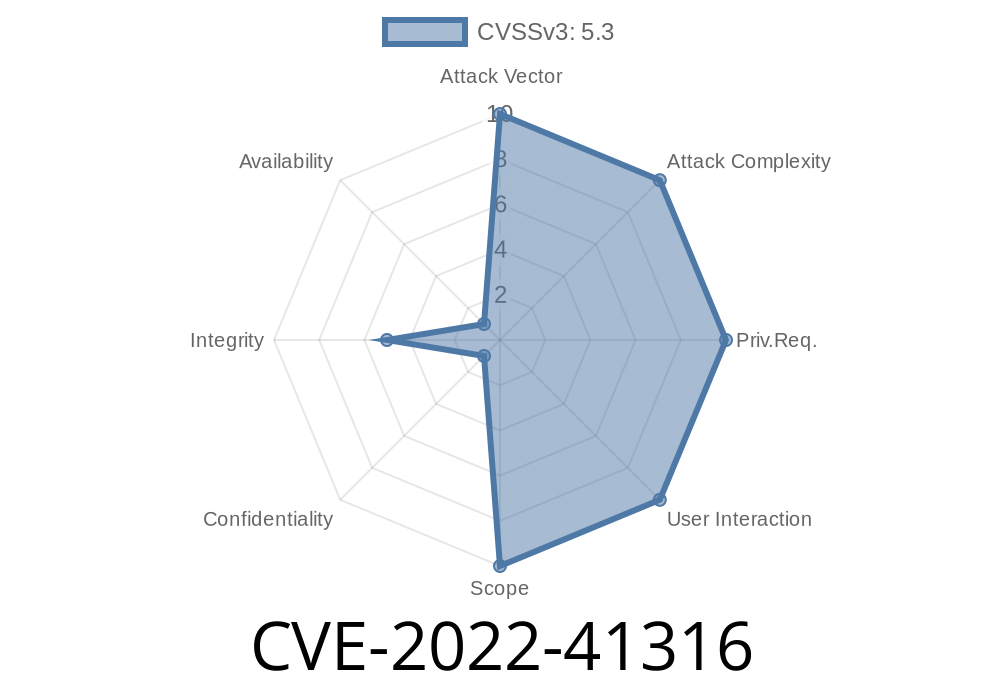The Common Vulnerabilities and Exposures (CVE) organization's latest addition, CVE-2022-41316, highlights a significant issue within the popular open-source software, HashiCorp Vault, and its enterprise version, used for secret management and storing sensitive data. It primarily deals with the Transport Layer Security (TLS) certificate-based authentication method when loading Certificate Revocation Lists (CRLs) upon the system's startup. This post will explore the nature of the vulnerability, how to detect it, ways to mitigate it, and links to additional resources and references.
Issue
HashiCorp Vault's TLS certificate authentication method has a known vulnerability that, if exploited, can result in unauthorized access to sensitive information due to CRLs not being loaded into memory during the system's startup. It occurs if the CRL has never been retrieved or if the optional configuration is incorrect, thus skipping the crucial step of checking the revocation list.
Exploit Details
The vulnerability manifests as a lack of certificate validation during the authentication process. An attacker with a revoked certificate might bypass the revocation check and gain access to sensitive data stored on the Vault.
Here is a simple scenario where the vulnerability can occur
1. A user is granted access to a Vault server, with a role using the TLS certificate authentication method.
2. The user's certificate is later revoked and added to the CRL, managed by the role's Certificate Authority (CA).
3. The Vault server is restarted, and the CRL is not loaded into memory during startup due to the vulnerability.
4. The user with the revoked certificate gains unauthorized access because the CRL is not checked during the authentication process.
Mitigation
To mitigate this vulnerability, users should update HashiCorp Vault (OSS) and Vault Enterprise to one of the fixed versions (1.12., 1.11.4, 1.10.7, or 1.9.10) as soon as possible. Updating Vault to one of those fixed versions ensures that the CRL is loaded during startup and the proper CRL checks are in place.
Additionally, users should always verify and follow best practices for setting up TLS certificate-based authentication using Vault. Proper configuration can prevent unauthorized access and reduce the impact of the vulnerability.
For more information on this vulnerability, check the following resources
1. CVE-2022-41316 (NVD): https://nvd.nist.gov/vuln/detail/CVE-2022-41316
2. HashiCorp Vault Changelog: https://github.com/hashicorp/vault/blob/main/CHANGELOG.md
3. HashiCorp Vault Security Advisory: https://www.hashicorp.com/security/cve-2022-41316
Conclusion
CVE-2022-41316 is a critical vulnerability affecting HashiCorp Vault's TLS certificate-based authentication method during startup. Ensuring proper configuration and updating to the fixed versions can reduce the risk and impact of this vulnerability. Users should remain vigilant and follow best practices when configuring Vault for secure and efficient management of sensitive data.
Timeline
Published on: 10/12/2022 21:15:00 UTC
Last modified on: 10/13/2022 17:37:00 UTC
